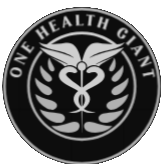The World Health Organization has estimated an incidence of 2.30 million cases of breast cancer in 2022, and 3.36 million by 2045.
It is a very heterogeneous disease: it is made up of different subtypes, each of which has a characteristic biological and molecular profile. This requires personalized treatment and an increasingly precise oncological approach.
But is its appearance a question of age? Classically, it has been considered to affect mainly older women. In fact, its incidence has increased over the last decades due to the ageing of the population.
However, the scientific community has observed that breast cancers in patients under 40 years of age have been increasing in recent years. In 2019, the percentage of cases in the United States affecting this sector of the population was around 4 percent , while more recent systematic reviews raise the global incidence to between 5 and 7 percent , varying depending on the development of the country and ethnic groups.
Although age is, in fact, one of the non-modifiable risk factors – together with sex (being female), early menarche (first menstruation) and late menopause – women with breast cancer under 40 make up a subgroup of patients with specific clinical management and psychosocial, fertility and social-occupational reintegration conditions.
Risk factors in women under 40 years of age
There is no single risk factor that increases the likelihood of developing this pathology, but rather a combination of variables. According to the World Health Organization , exposure to exogenous and modifiable factors such as overweight and obesity, tobacco, alcohol, pollution and a sedentary lifestyle are associated with some types of cancer, such as colorectal cancer and the one we are concerned with here, breast cancer.
Other factors that may explain the increase in incidence among the younger population are of a reproductive nature : nulliparity (not having children or not having carried any pregnancy to term), late age at first birth and, in general, the delay in motherhood in today’s society increase the risk, although they cannot be considered direct causal agents.
Among the non-modifiable factors, the appearance of the disease in young women may be due to a genetic predisposition, especially due to the mutation of the BRCA 1 and 2 genes . In case of suspicion of hereditary syndrome, specialists from genetic counselling units provide recommendations and preventive measures for healthy carriers.
In addition, women under 40 years of age may develop pregnancy-related breast cancer : during pregnancy and breastfeeding or within one year after giving birth. Despite the normal physiological changes in the breast during pregnancy, it is important to detect abnormalities that may be a reason for consultation with specialists. However, breastfeeding is also considered a protective factor.
Finally, a circumstance that may further increase the risk is having received thoracic radiotherapy between the ages of 10 and 30 to treat another type of cancer.

The importance of early diagnosis and prevention
In general, the early diagnosis of breast cancer through screening programs and increasingly precise and targeted treatments, with a multidisciplinary approach, have meant that this disease has good survival rates: over 90% in low-risk tumor profiles .
These early detection programs are carried out using mammography and usually begin between the ages of 45 and 50.
In addition, it is advisable for women to perform a breast self-examination every month throughout their life. Knowing their breasts well will allow them to detect changes and identify alterations (nodules, changes in colour, skin retraction, secretions, etc.) that may be a reason for consulting a specialist.
As for prevention, and as we have pointed out above, avoiding excess body weight, not smoking, not drinking alcohol and doing physical activity regularly reduce the risk of suffering from this disease.
But this is not enough. In the breast units of hospitals, work is done every day not only to diagnose and treat the disease, but also to improve the quality of life of patients who overcome it, promoting a healthy lifestyle before, during and after their diagnosis , as well as an appropriate psychosocial approach.





















+ There are no comments
Add yours